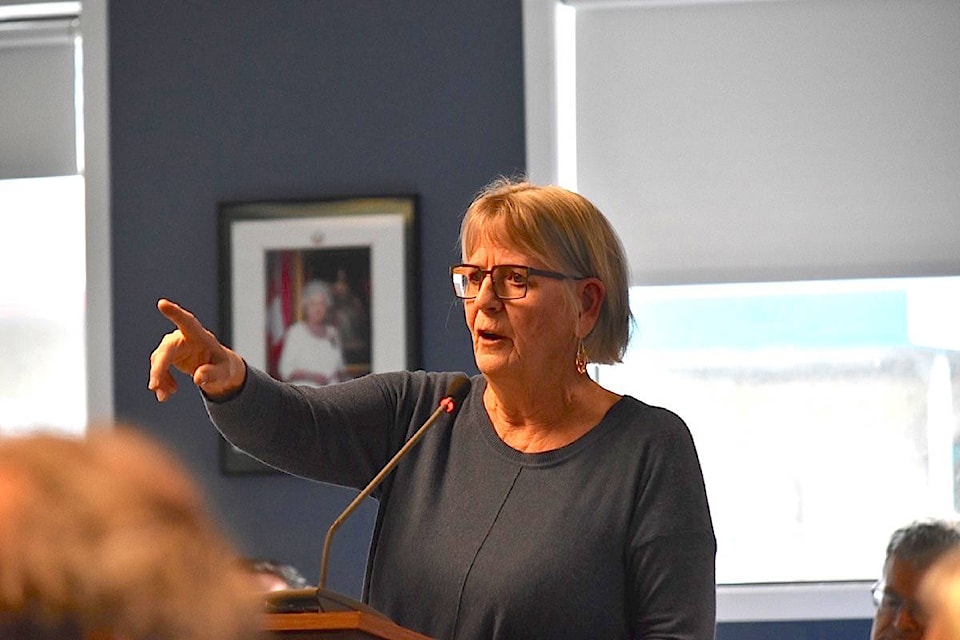Fed up with smells emanating from the sewage treatment plant on Brent Road in Area B, the Curtis Road Residents Association (CRRA) has given the regional sewage commission a deadline of Nov. 15 to commit to fixing the problem.
If not, the group says it will take its campaign to the next level by filing a complaint with provincial authorities, extending media coverage and preparing for legal action.
The group’s main concerns are bioreactor odour controls, and an equalization basin planned for a buffer zone between their properties and the Comox Valley Water Pollution Control Centre.
The facility treats wastewater from Courtenay and Comox. The CVRD began to receive odour complaints shortly after the plant was built in 1984.
The following year, the Curtis Road residents committee filed legal action, which was resolved out-of-court in 1992. Along with compensating residents, the CVRD relocated the composting facility, and installed additional treatments to capture and treat the most odorous gases from equipment.
By 1997, a scrubber system had been installed for $2 million. In 2002, a $5 million composting facility was constructed. In 2016, a study concluded that odours could be reduced by more than 80 per cent by rehabilitating the scrubber, and covering the primary clarifiers. The remaining 18 per cent of odour could be resolved by covering the bioreactors. A recent CVRD staff report notes “a significant decrease in odour emissions,” roughly in line with 2016 projections.
However, there remain infrequent exceedances of five odour units (OU) at the facility’s property line.
There are no federal regulations on odour, and no odour impact criteria in B.C. The only province with a quantifiable guideline is Ontario, which sets a limit of one OU.
In a Nov. 5 presentation to the commission, CRRA spokesperson Jenny Steel said recent odour modelling shows that effluent, when it enters the bioreactors, gives off more than 5,000 OU – more than any other source in the entire plant.
“Our question is simple: What do you plan to do if this basin stinks out our neighbourhood?” Steel said. “Or is it your expectation that we suck it up and move to hotels?
“Is the commission prepared to find the $8.5 million to solve this problem if that’s what it takes?” she said, referring to costs to cover bioreactors, and to install a new scrubber and polisher.
Comox Mayor/commission director Russ Arnott said some houses in the neighbourhood have complained, but others haven’t. Steel said some houses are only occupied in summer, while others are unoccupied altogether.
“A lot of people have simply given up complaining,” she said. “Our complaints go into a black hole. We get no feedback.”
Comox director Ken Grant is struggling with the OU ratio as he tries to find something relative. On Halloween night, he said there was a “ripe” smell of manure in and around Guthrie Road.
“If it’s barely detectable at one, I don’t know what five smells like,” Grant said. “I don’t know how to quantify that.”
“I think we’re all empathetic and we do want to do the right thing,” Arnott said. “I don’t really take kindly to be given an arbitrary deadline by the middle of November that we have to do something…We need to make a decision as a group, because this affects my taxpayers in Comox. This is going to affect the taxpayers in Courtenay. I’m not saying it’s bad that we do this. Actually, I’m going to vote in favour of spending that money, but I want to see a proper report. And I don’t want to be scared into making a decision because people are going to go to the press in two weeks’ time. Let it happen.”
The commission approved staff recommendations for:
•Further research about B.C. jurisdictions to better inform a decision about setting an odour standard;
•Additional odour sampling to build better data, and run new numbers through the odour dispersion model;
•An odour control systems option analysis to further inform a final recommendation before finalizing the proposed 2020-2024 financial plan.
“Another study is simply kicking the can down the road,” Steel said. “Covering the source and treating foul air appears to be the accepted way to solve odour problems. If there was a silver bullet, then surely one of the engineering companies would have found it by now.”
The commission also agreed to work with the CRRA to draft a Good Neighbour Agreement for consideration. The agreement sets out expectations pertaining to the treatment plant in terms of odour level, noise and light pollution.
Before Steel’s presentation, the commission approved a policy to allow Area B director Arzeena Hamir to participate at sewage commission meetings, but only as a non-voting member. The commission consists of three voting representatives each from Comox and Courtenay, and one from CFB Comox.
reporter@comoxvalleyrecord.com
Like us on Facebook and follow us on Twitter
